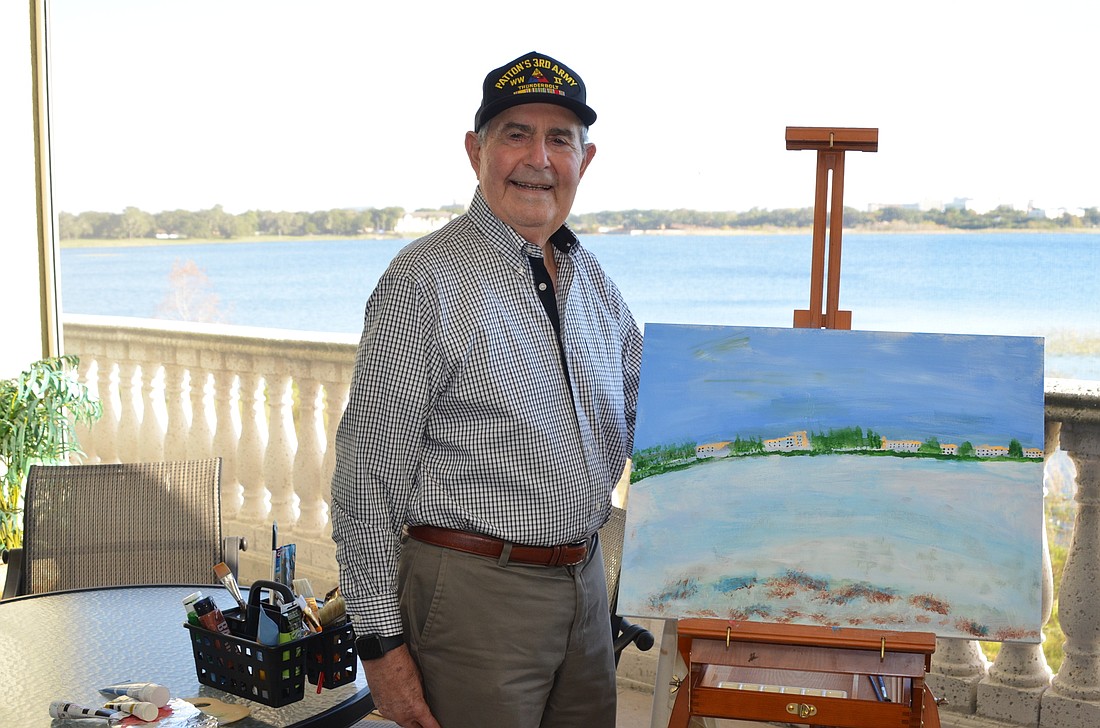- January 14, 2025
-
-
Loading

Loading

Gilbert Waganheim had just turned 21 and was living in a large Jewish community in eastern Baltimore when he was called up to serve in the U.S. Army and fight the Germans in World War II.
He trained at Camp Pope, in Louisiana, and was assigned to the 42nd Tank Regiment of the newly formed 11th Armor Division, which he described as a combination of tanks, field artilleries, infantry, reconnaissance, medical and supplies. When the regiment split, Waganheim stayed with the 42nd Tank Battalion.
The Army corporal technician, now 98 and living in Dr. Phillips, recalled his three years as a U.S. soldier and what it was like fighting a ground war through Europe in the 1940s.
He was shipped overseas in December 1944 as part of the headquarters of the 42nd Tank Battalion, and his first assignment was to guard the Meuse River, in France. When the Germans engaged in the Battle of the Bulge, Waganheim was assigned to Gen. George Patton's 3rd Amy and sent to Belgium.
Waganheim was at headquarters — making maps and plans — so he escaped any battle injuries. The soldiers fought through Belgium and Luxembourg and into Germany, capturing thousands of German soldiers along the way, he said.
LIBERATING JEWS
"The big powers decided that the Russians would occupy Austria," Waganheim said. "Patton hated the Russians, so he ordered us into Austria, where we fought. … At one point, our reconnaissance battalion was going down a road and … there was a jeep with white flags coming toward them. He was the (German) commander of the Mauthausen concentration camp. He was afraid of the Russians, so he surrendered to the Americans.
"We went into the concentration camp and liberated the camp," he said. "As we approached it, there were a thousand shoes and a pile of bodies … and going in I saw the ovens and it reminded me of when I was about 17, my father had a bread route in Baltimore. … The ovens were exactly the way the ovens were in the concentration camp where they burned the bodies."
Waganheim recalled asking the camp survivors if he could help in any way. One camp survivor who, after discovering he was American, asked him to send a letter to her relatives in Chicago to let them know she was alive. He obliged.
The war was over soon after, and Waganheim was on his way home to the United States.
POST-WAR LIFE
Waganheim served three years in the Army and then returned to his family, who were by then living in Washington, D.C. He got his accounting degree from Benjamin Franklin University and
worked for an accountant for a year before briefly becoming an accountant for a large jewelry store chain.
For the next 40 years, he was the accountant for the Giant Food supermarket company.
A few years after leaving the military, Waganheim was attending a party with friends; all of the men and women paired up, and this is where he met Edythe. After a brief engagement, they were married for 65 years before her death. They had two sons, four grandchildren and three great-grandchildren.
The couple made several trips to Europe, and Waganheim returned to the Mauthausen concentration camp just to see it once more. It was just a place to see, he said.
He moved to Orlando in June to be near family and recently joined American Legion Post 63, in Winter Garden. On Saturday, Nov. 16, just shy of his 98th birthday, Waganheim walked a mile in the annual Challenge 22 Ruck Walk, hosted by the post.
Waganheim attends an art class almost weekly in Windermere and has an easel set up on the balcony of his Dr. Phillips condo.
The United States Holocaust Memorial Museum has conducted thousands of video and oral histories with Jewish men and women and Holocaust survivors, and Waganheim's interview was added to the collection in 2015.
"I wish we could have saved more Jews," he said. "But that was life, that's what happened."